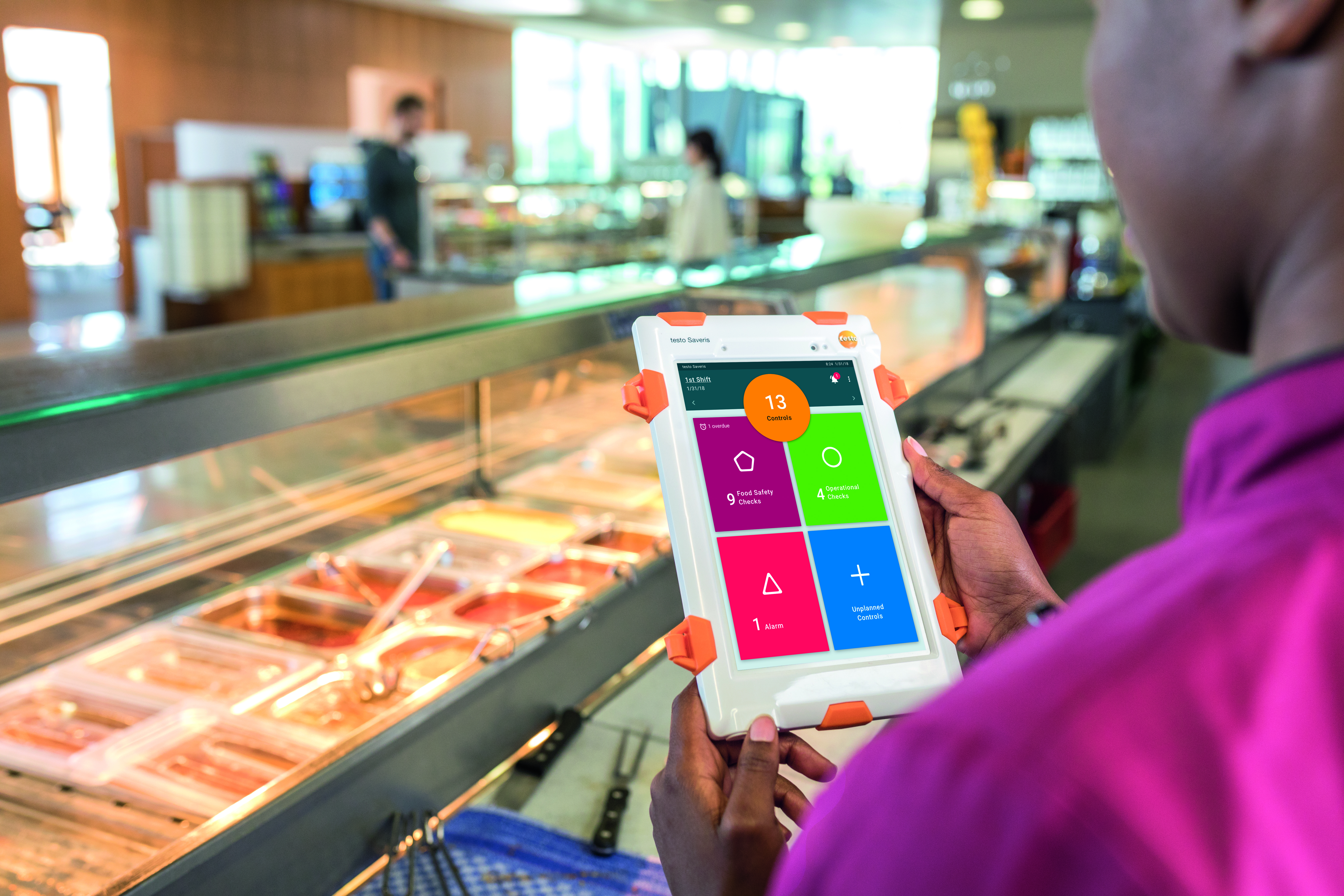The COVID-19 outbreak is turning the world upside down. COVID-19 is forcing all companies to question and adapt previously established working methods. Due to the global scale of the pandemic, all over the world companies both large and small are having to make swift and sometimes very radical changes to continue doing business. Restaurant chains are struggling with reduced workforces and shrinking revenues, while the food retail industry has struggled with increased customer demand and panic buying, along with changing supply chains and delivery delays.
Whether we like it or not: COVID-19 is forcing all restaurants and supermarkets to take additional measures to protect customers and employees and to contain the rapid spread of SARS-CoV-2. These range from hygiene, disinfection, distancing and protective measures to recommendations on how to handle pick-up and delivery services and employee health during the pandemic. The responsibility for implementing all these recommendations usually lies with the quality managers. They must ensure that all company sites comply with these extra measures.
COVID-19 as an accelerator for digitization and automation
The challenge now is to find smart alternatives to the usual processes, which no longer work as they did before due to the pandemic. First and foremost, for most companies in the food industry, COVID-19 means stress – both emotionally and economically. Lockdowns temporarily bring all restaurant business to a halt, resulting in huge drops in sales. Distance rules must be observed and, in some cases, facilities must be modified to ensure this is possible. Established food safety regulations need to be reconsidered and additional measures taken to ensure the safety of customers and employees. For the staff, washing hands, cleaning and disinfecting surfaces are more important than ever. With the increased pressure of compliance, finding smarter ways for the quality manager to achieve these objectives is essential and this is where digitization is the solution.

Here are 5 reasons you should consider a digital quality management system:
1. Faster response to changes
The pandemic has resulted in the need to change very rapidly. New procedures must be defined and implemented literally overnight. Using a digital system allows the quality manual to ensure every site can be updated simultaneously at the touch of a button.

2. Intuitive implementation of new measures
Digital checklists have the key advantage that they can support employees in implementing newly introduced measures both visually and in text form. For example, the correct implementation of newly introduced disinfection measures can be explained via a step-by-step pictorial representation. If checklists are processed digitally, employees can not only document, they can also take a photo as proof of implementation. Thus, employees are instructed in how to implement the measures correctly without having to undergo hours of training and instruction. If limit values are violated or if a result deviates from predefined expectations, a digital system supports employees with guided corrective measures and encourages them to take action.
3. Smooth processes via automation
The more processes are automated and require little or no human intervention, the more processes can run smoothly in times of crisis, with more time being left for more important things. This is particularly evident in the example of automated temperature monitoring of refrigerated cabinets and rooms compared to manual temperature logs.
4. Digital data acquisition for more transparency
In the supermarkets/ restaurants, implementation of the measures specified in the quality handbook is always managed and documented by the employees on site. How checks and measurements are carried out and how often this happens varies. However, temperature checks and cleaning and disinfection measures are only effective if they are carried out regularly, i.e. several times a day. If the staff work with paper-based systems, the controls and measures are documented on forms, which are filed and stored in folders on site. These are often only reviewed during audits, sometimes only updated then too. If the employees on site use a mobile device and digital checklists instead of pen and paper, the data recorded is consolidated and can be analysed in the software. Both the site management and quality management are provided with detailed transparency regarding the site’s performance. Moreover, to make sure that the actual measured values are documented, particularly when measuring the temperature of prepared or hot food, for example, digital quality management systems also offer the option of integrating hand-held measuring instruments. Communication-enabled thermometers measure the temperature, e.g. the core temperature of the chicken pieces in the display, and wirelessly send the resulting values with the serial number of the measuring instrument, the time and the ID of the staff carrying out the measurement. Manual entries are no longer necessary, and the quality managers can be certain that the data displayed in the system corresponds to actual measurement data.
5. Remote auditing made easy
Quality management in large food companies is normally not just about having responsibility for one site, but for entire areas, all sites in one country or even for regions spanning several countries. Under COVID-19, this leads to further challenges. How can the performance of the sites be monitored if travel restrictions and social distancing regulations make it impossible to visit all supermarkets/ restaurants in person? With digital quality management systems, it’s a different story. Thanks to automated storage in a cloud, both branch management and quality management can view all collected data and the results of the relevant sites on a dashboard – consolidated and clearly presented in graphical form. With appropriate login details, quality management can access the data from anywhere, view and analyse it and evaluate the performance of all sites at a glance.
Conclusion
The implementation of a digital QMS saves money. And even more importantly: it creates a reliable basis for responding quickly and flexibly to changes, particularly in times of crisis. The pandemic also offers the opportunity to reflect on traditional ways of working and – in response to this – to take practical steps towards digitization and automation.







